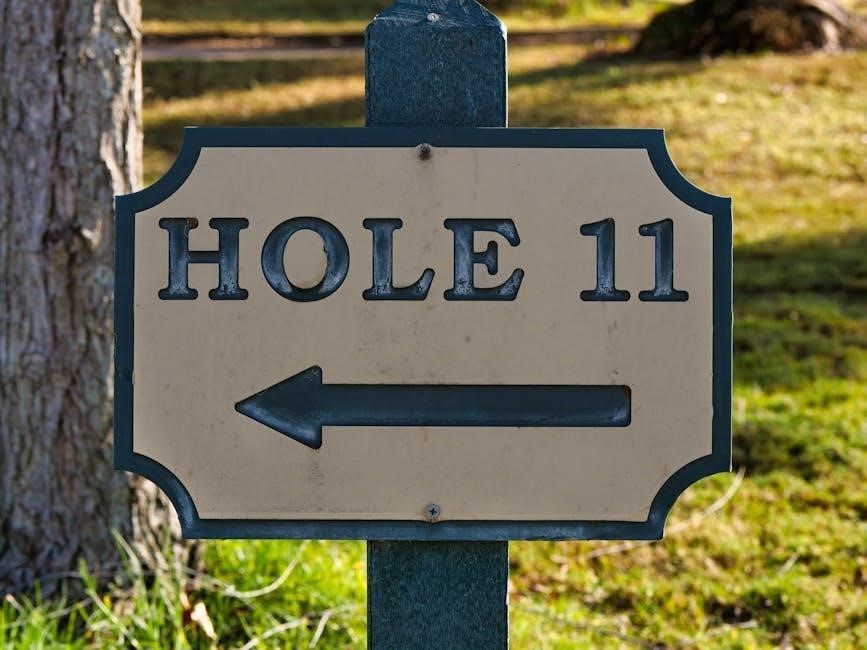Welcome to the Turbo Rebuild Guide, your comprehensive resource for understanding and executing a successful turbocharger rebuild. This guide provides step-by-step instructions, tips, and expert advice to help you restore your turbocharger to optimal performance, saving money and extending engine life. Perfect for DIY enthusiasts and professional mechanics alike.
1.1 Importance of Proper Turbocharger Maintenance
Proper turbocharger maintenance is crucial for ensuring optimal performance, fuel efficiency, and engine longevity. A well-maintained turbocharger prevents premature wear, reduces the risk of costly repairs, and maintains peak power output. Regular inspection and timely rebuilds can extend the turbo’s lifespan, saving money and avoiding potential engine damage. Proper maintenance also ensures reliable operation under extreme conditions, making it essential for both everyday driving and high-performance applications.
Tools and Materials Needed for Turbo Rebuild
Essential tools include snap ring pliers, dental picks, and metric wrenches. Materials needed are rebuild kits, gaskets, seals, and high-performance lubricants for optimal results.
2.1 Specialized Tools Required
Rebuilding a turbocharger requires specialized tools to ensure precision and avoid damage. Essential tools include snap ring pliers for removing retention rings, dental picks for delicate disassembly, and metric wrenches for bolt removal. Additional tools like bearing pullers and shaft straightening tools may be needed for complex repairs. Using the right tools is crucial for preventing damage to the turbo’s internal components and ensuring a successful rebuild. Always consult your rebuild kit for specific tool recommendations.

2.2 Essential Materials and Rebuild Kits
A turbo rebuild kit is vital for restoring performance and includes components like gaskets, O-rings, and shaft seals. Kits vary by turbo model but often contain bearings, compressor and turbine housing seals, and other wear parts. Additional materials, such as threadlocker and high-temperature grease, are necessary for proper assembly. Always purchase rebuild kits from reputable suppliers to ensure quality and compatibility. This ensures a leak-free, durable rebuild, saving time and money compared to buying individual parts.

Turbocharger Disassembly and Inspection

Disassembling the turbocharger requires careful removal of components to inspect for wear, damage, or contamination. This step is crucial for identifying parts that need replacement or cleaning.
3.1 Step-by-Step Disassembly Process
Begin by marking the compressor wheel’s position relative to the shaft for proper realignment later. Use specialized tools like snap ring pliers to remove the compressor wheel nut. Carefully pull the wheel straight off to avoid damaging the shaft. Next, remove the turbine housing bolts and gently pry it loose. Extract the CHRA by sliding it out of the housing. Finally, inspect the turbine wheel for damage or wear.
3.2 Identifying Wear and Damage
Inspect the turbocharger for signs of wear or damage, such as excessive shaft play, oil or coolant contamination, or corrosion. Check the compressor and turbine wheels for cracks, dents, or imbalance. Look for worn bearings or seals, which can cause leakage or vibration. Addressing these issues early prevents further damage and ensures optimal performance post-rebuild.

Cleaning the Turbocharger Components
Clean turbo components using solvents and soft brushes to remove dirt and debris. Avoid abrasive materials that could damage surfaces. Ensure all parts are dry before reassembly.
4.1 Methods for Effective Cleaning
Thorough cleaning is essential for turbocharger efficiency. Use solvents and soft-bristle brushes to remove dirt and grime without damaging surfaces. For stubborn deposits, ultrasonic cleaners are effective. Always avoid abrasive materials and high-pressure washes, which can harm components. After cleaning, ensure all parts are completely dry to prevent corrosion and ensure proper reassembly. Regular cleaning maintains performance and extends turbo lifespan.
4.2 Avoiding Damage During Cleaning
Avoid using high-pressure washes or abrasive materials, as they can scratch or damage turbo components. Never use harsh chemicals that might corrode sensitive parts. Handle turbine and compressor wheels with care to prevent scratching. Use soft-bristle brushes and mild solvents to clean delicate surfaces. Always ensure parts are completely dry before reassembly to prevent corrosion. Proper handling and cleaning techniques are crucial for maintaining turbo integrity and performance.

Rebuilding the Turbocharger (CHRA Replacement)
Replacing the CHRA (Core Housing and Rotating Assembly) is the cornerstone of a turbo rebuild. This cost-effective process ensures optimal performance and durability, addressing wear and damage efficiently.
5.1 Installing the New CHRA
Installing the new CHRA requires precision to ensure proper alignment and functionality. Begin by carefully aligning the CHRA with the turbo housing, ensuring all components fit snugly. Secure it using the provided screws, tightening in a star pattern to avoid warping. This step is critical for maintaining balance and performance. Proper installation ensures the turbo operates efficiently, delivering enhanced power and fuel efficiency while minimizing wear on moving parts.
5.2 Balancing the Turbine and Compressor Wheels
Proper balancing of the turbine and compressor wheels is essential for smooth turbo operation. Use a balancing machine to ensure they are within acceptable tolerances. If damaged, wheels may need rebalancing or replacement. Always follow manufacturer guidelines and consider professional assistance for precise balancing, ensuring optimal performance and longevity of your turbocharger.

Reassembly and Installation
Reassembly requires careful alignment of components and precise torque specifications. Ensure all seals and gaskets are properly installed to prevent leaks. Use specialized tools like snap ring pliers for secure fitting. Follow a methodical approach to avoid damage, ensuring a smooth and efficient turbocharger installation that restores peak performance to your engine.
6.1 Proper Reassembly Techniques
Reassembly begins with the turbine and compressor sides, ensuring proper alignment and seating of all components. Use specialized tools like snap ring pliers for secure fastening. Apply even torque to avoid warping or damaging the housing. Ensure all seals and gaskets are correctly positioned to prevent leaks. Follow manufacturer guidelines for bolt tightening sequences and torque specifications. Double-check the alignment of the shaft and wheels before final installation to guarantee smooth operation and optimal performance.
6.2 Installation Tips and Precautions
Ensure proper alignment of the turbocharger with the engine’s manifold and exhaust system. Use torque specifications for all bolts to avoid over-tightening, which can damage threads or housings. Apply a thin layer of grease to moving parts for smooth operation. Check for any leaks around seals and gaskets before starting the engine. Avoid over-revving during the initial startup to allow the turbo to break in properly. Refer to the manufacturer’s guide for specific installation instructions.
Testing and Validation Post-Rebuild
After reinstalling the turbocharger, perform an initial start-up to monitor for leaks or unusual noises. Conduct a performance test to ensure proper boost pressure and smooth operation.
7.1 Initial Start-Up and Monitoring
After reinstalling the turbocharger, start the engine and listen for unusual noises or vibrations. Check for oil or coolant leaks around the turbo connections. Allow the engine to warm up gradually, monitoring boost pressure with a gauge if possible. Pay attention to performance changes and ensure smooth operation. If everything functions correctly, proceed to performance testing.
7;2 Performance Testing
After initial start-up, conduct a thorough performance test to ensure the turbocharger operates efficiently. Drive under various conditions to assess power output, acceleration, and fuel efficiency. Use diagnostic tools to monitor boost pressure, RPM, and engine performance. Look for consistent performance without surging or lag. A well-rebuilt turbo should deliver improved power, smoother operation, and enhanced reliability, confirming the success of the rebuild process.

Cost Considerations and Savings
Rebuilding a turbocharger offers significant cost savings compared to buying a new one. Average rebuild costs are $450, while new turbos can exceed $1,250. Rebuilding extends lifespan, reducing replacement frequency and long-term expenses.
8.1 Comparing Rebuild vs. Replacement Costs
Rebuilding a turbocharger is significantly more cost-effective than replacing it. On average, a rebuild costs around $450, while a new turbocharger can range from $1,250 to over $2,000. This substantial price difference makes rebuilding an attractive option for those looking to save money. However, the decision depends on the extent of damage and whether a rebuild kit can address the issues effectively. Proper tools and expertise are essential for a successful rebuild, ensuring long-term financial benefits and performance.
8.2 Long-Term Financial Benefits
Rebuilding your turbocharger offers significant long-term financial benefits. By extending the lifespan of your current turbo, you reduce the need for frequent replacements, saving hundreds of dollars over time. Regular maintenance and rebuilds also prevent premature engine wear, lowering overall ownership costs. Additionally, a well-maintained turbocharger improves fuel efficiency and performance, further enhancing cost savings and ensuring your vehicle runs optimally for years to come.

When to Replace Instead of Rebuild
Replace your turbocharger if it’s beyond repair, such as severe CHRA damage, cracked housings, or worn-out turbine wheels. Rebuilding isn’t feasible in cases of extreme wear or corrosion.
9.1 Assessing Beyond-Repair Damage

Assessing beyond-repair damage involves inspecting for severe issues like cracked housings, excessive shaft wear, or damaged turbine wheels. Look for signs of corrosion, metal shavings, or oil contamination. If the CHRA is severely damaged or the compressor wheel is bent, rebuilding may not be feasible. Use a strobe light to check for imbalance or heat damage. If damage is extensive, replacement is the only option to ensure reliability and performance.
9.2 Choosing the Right Replacement Turbo
When selecting a replacement turbo, ensure it matches your engine’s specifications for optimal performance. Consider factors like horsepower requirements, turbo size, and compressor wheel design. Choose between OEM or aftermarket options, balancing cost and quality. Verify compatibility with your vehicle’s make and model. Consult with experts or use manufacturer guidelines to avoid mismatching. A properly chosen turbo ensures reliability, efficiency, and enhanced engine performance.
Best Practices for Turbo Maintenance
Regular inspections, proper oil changes, and monitoring performance are crucial. Avoid extreme temperatures and use high-quality materials. Follow manufacturer guidelines for optimal turbo longevity and efficiency always.
10.1 Regular Inspection and Maintenance
Regular inspections are vital to ensure your turbocharger operates efficiently. Check for wear on the turbine and compressor wheels, and inspect bearings for smooth operation. Monitor oil flow, as starvation can lead to premature wear. Clean or replace filters regularly and ensure proper installation of components. Address any leaks or unusual noises promptly. Use specialized tools for precise adjustments and always follow manufacturer guidelines to maintain optimal performance and longevity.
10.2 Preventative Measures
Preventative measures are crucial for maintaining turbocharger health. Always ensure a clean workspace during rebuilds to avoid contamination. Properly install components to prevent imbalance and wear. Regularly check and maintain oil flow to prevent starvation. Avoid extreme temperature fluctuations and monitor boost pressure. Follow manufacturer guidelines for lubrication and operation. Address minor issues promptly to prevent major damage. These steps ensure reliability, performance, and longevity of your turbocharger.
Completing a turbo rebuild journey offers significant cost savings and performance gains. With proper tools and knowledge, DIY enthusiasts can achieve professional results, ensuring reliability and enhanced engine power.
11.1 Summary of Key Points
A successful turbo rebuild requires careful planning, the right tools, and attention to detail. Regular maintenance, proper disassembly, and inspection are crucial for identifying wear. Cleaning and balancing components ensure optimal performance. Rebuilding saves costs compared to buying new, but replacement is necessary if damage is severe. Following best practices and expert advice helps achieve long-term reliability and efficiency, making the effort worthwhile for both DIY enthusiasts and professionals.
11.2 Encouragement for DIY Attempts
Tackling a turbo rebuild is a rewarding experience that saves money and builds mechanical skills. With basic tools and patience, even novice enthusiasts can achieve professional results. The satisfaction of restoring performance and extending your turbo’s life is unmatched. While challenging, the process is manageable with proper guidance. Don’t hesitate to give it a try—success is within reach, and the benefits far outweigh the effort.



